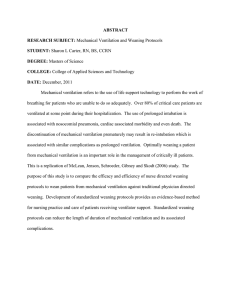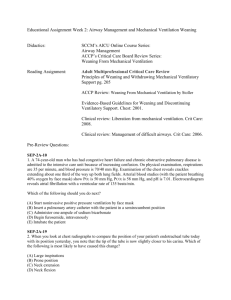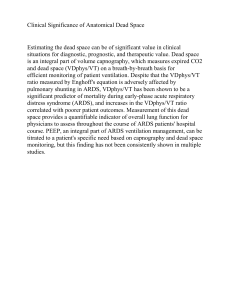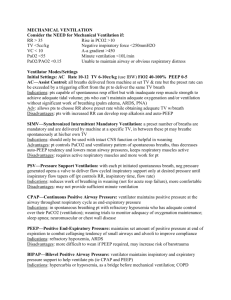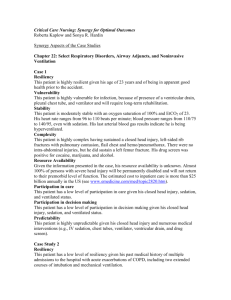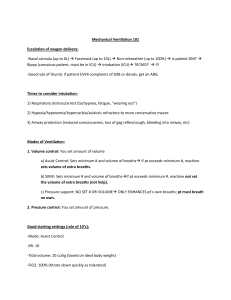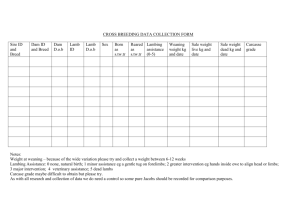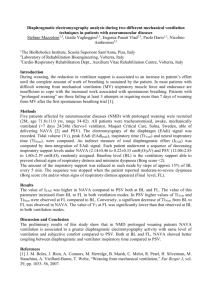Critical Care Nursing: Synergy for Optimal Outcomes
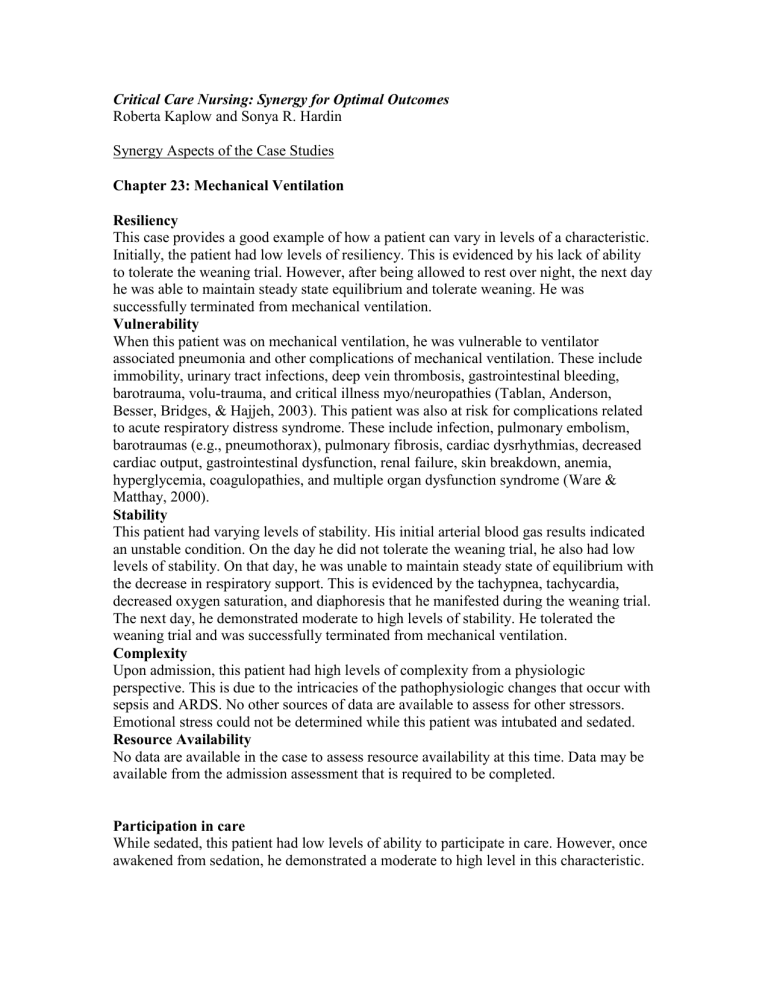
Critical Care Nursing: Synergy for Optimal Outcomes
Roberta Kaplow and Sonya R. Hardin
Synergy Aspects of the Case Studies
Chapter 23: Mechanical Ventilation
Resiliency
This case provides a good example of how a patient can vary in levels of a characteristic.
Initially, the patient had low levels of resiliency. This is evidenced by his lack of ability to tolerate the weaning trial. However, after being allowed to rest over night, the next day he was able to maintain steady state equilibrium and tolerate weaning. He was successfully terminated from mechanical ventilation.
Vulnerability
When this patient was on mechanical ventilation, he was vulnerable to ventilator associated pneumonia and other complications of mechanical ventilation. These include immobility, urinary tract infections, deep vein thrombosis, gastrointestinal bleeding, barotrauma, volu-trauma, and critical illness myo/neuropathies (Tablan, Anderson,
Besser, Bridges, & Hajjeh, 2003). This patient was also at risk for complications related to acute respiratory distress syndrome. These include infection, pulmonary embolism, barotraumas (e.g., pneumothorax), pulmonary fibrosis, cardiac dysrhythmias, decreased cardiac output, gastrointestinal dysfunction, renal failure, skin breakdown, anemia, hyperglycemia, coagulopathies, and multiple organ dysfunction syndrome (Ware &
Matthay, 2000).
Stability
This patient had varying levels of stability. His initial arterial blood gas results indicated an unstable condition. On the day he did not tolerate the weaning trial, he also had low levels of stability. On that day, he was unable to maintain steady state of equilibrium with the decrease in respiratory support. This is evidenced by the tachypnea, tachycardia, decreased oxygen saturation, and diaphoresis that he manifested during the weaning trial.
The next day, he demonstrated moderate to high levels of stability. He tolerated the weaning trial and was successfully terminated from mechanical ventilation.
Complexity
Upon admission, this patient had high levels of complexity from a physiologic perspective. This is due to the intricacies of the pathophysiologic changes that occur with sepsis and ARDS. No other sources of data are available to assess for other stressors.
Emotional stress could not be determined while this patient was intubated and sedated.
Resource Availability
No data are available in the case to assess resource availability at this time. Data may be available from the admission assessment that is required to be completed.
Participation in care
While sedated, this patient had low levels of ability to participate in care. However, once awakened from sedation, he demonstrated a moderate to high level in this characteristic.
This is evidenced by his ability to cooperate with the weaning trial and was able to be extubated.
Participation in decision making
While sedated, this patient had low levels of ability to participate in decision making.
Once removed from sedation, his capacity increased in this characteristic. There are no data to suggest cognitive impairment post-extubation and discontinuation of sedation.
Predictability
The trajectories of ARDS and sepsis are variable. Because of this, during the patient’s bout with these conditions, he had low levels of predictability. The etiologies of ARDS and sepsis were not provided, thereby making it difficult to determine if future episodes can be anticipated.
